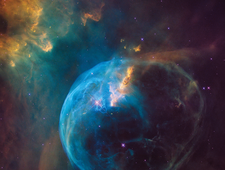Plasma 5 with long-term support
Plasma Zone

© Lead Image © NASA_ngc7635bubble_hubble26, 123RF.com
KDE is steering the Plasma 5.8 desktop into calmer waters through long-term support, while the developers continue to extend and perfect.
When Matthias Ettrich created the Kool Desktop Environment more than two decades ago [1], no one knew where the journey was heading. Ettrich had noticed that the already five-year-old Linux was becoming increasingly sophisticated, but it lacked a uniform and stylish desktop environment that made daily work easier for end users.
For more than 20 years and five generations of software, KDE has remained true to its task of supporting end users, whereas Gnome, which is three years younger, increasingly targets developers and other professional users. Ettrich's ongoing commitment led to some personal recognition: He was awarded the Medal of Merit of the Order of Merit of the Federal Republic of Germany in 2009 for founding the KDE project.
Tripartite
KDE comprises three parts: KDE Desktop; KDE Frameworks, which was previously monolithic KDE libraries; and KDE Applications. The desktop component has gone by the name Plasma since the fifth incarnation. Although the three components interact, they do not need to be released together. This independence makes work easier for developers.
[...]
Buy this article as PDF
(incl. VAT)
